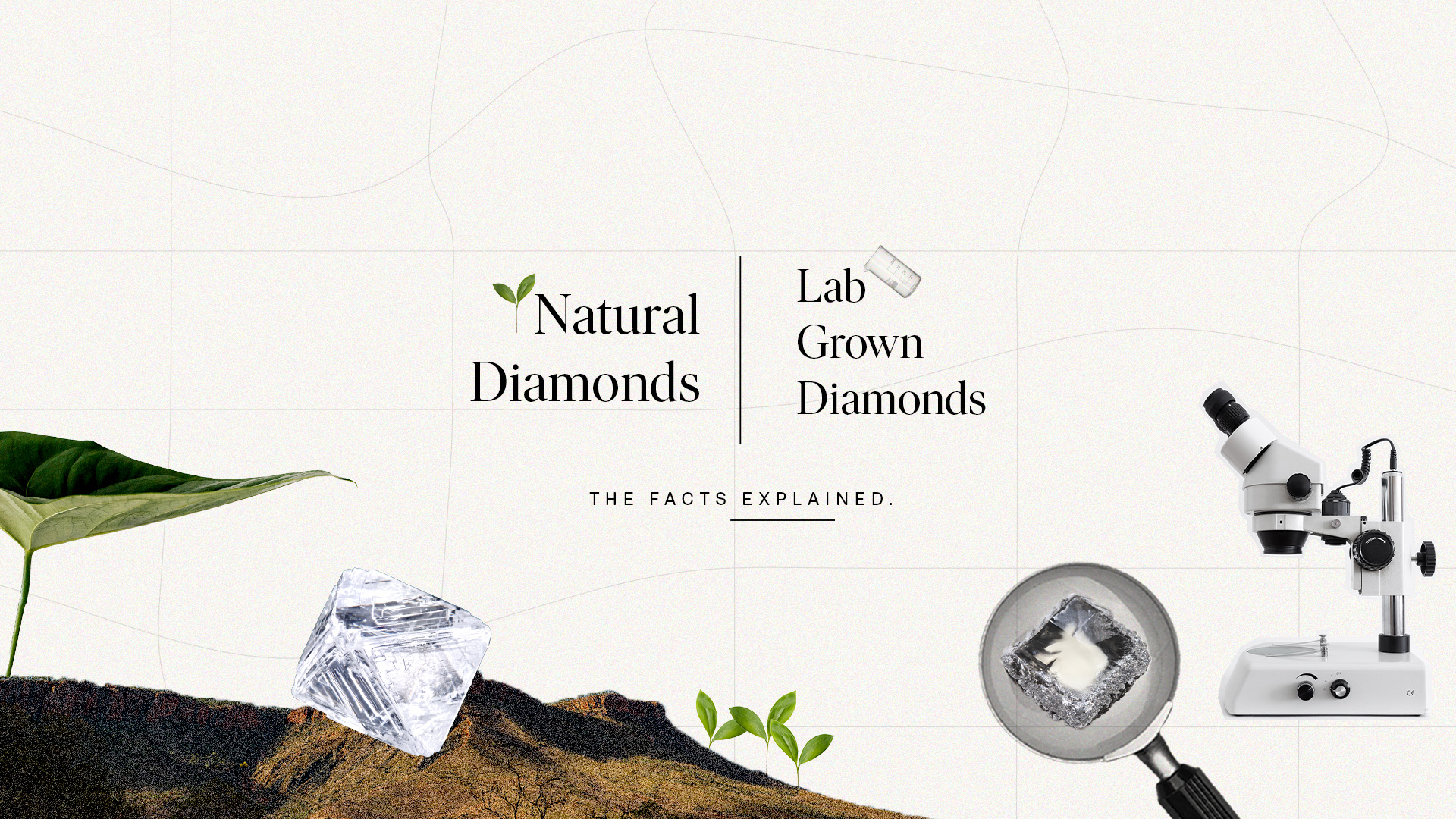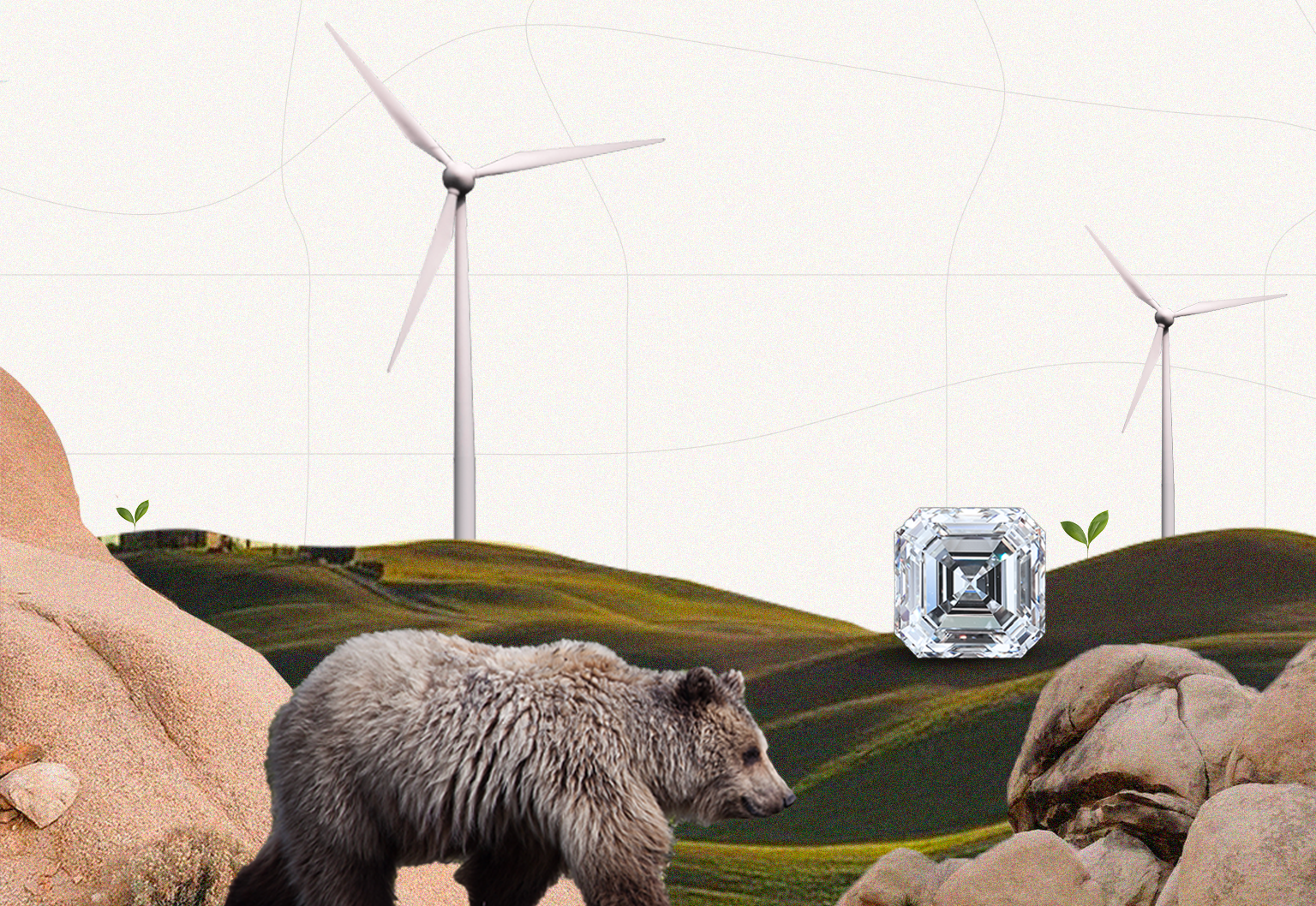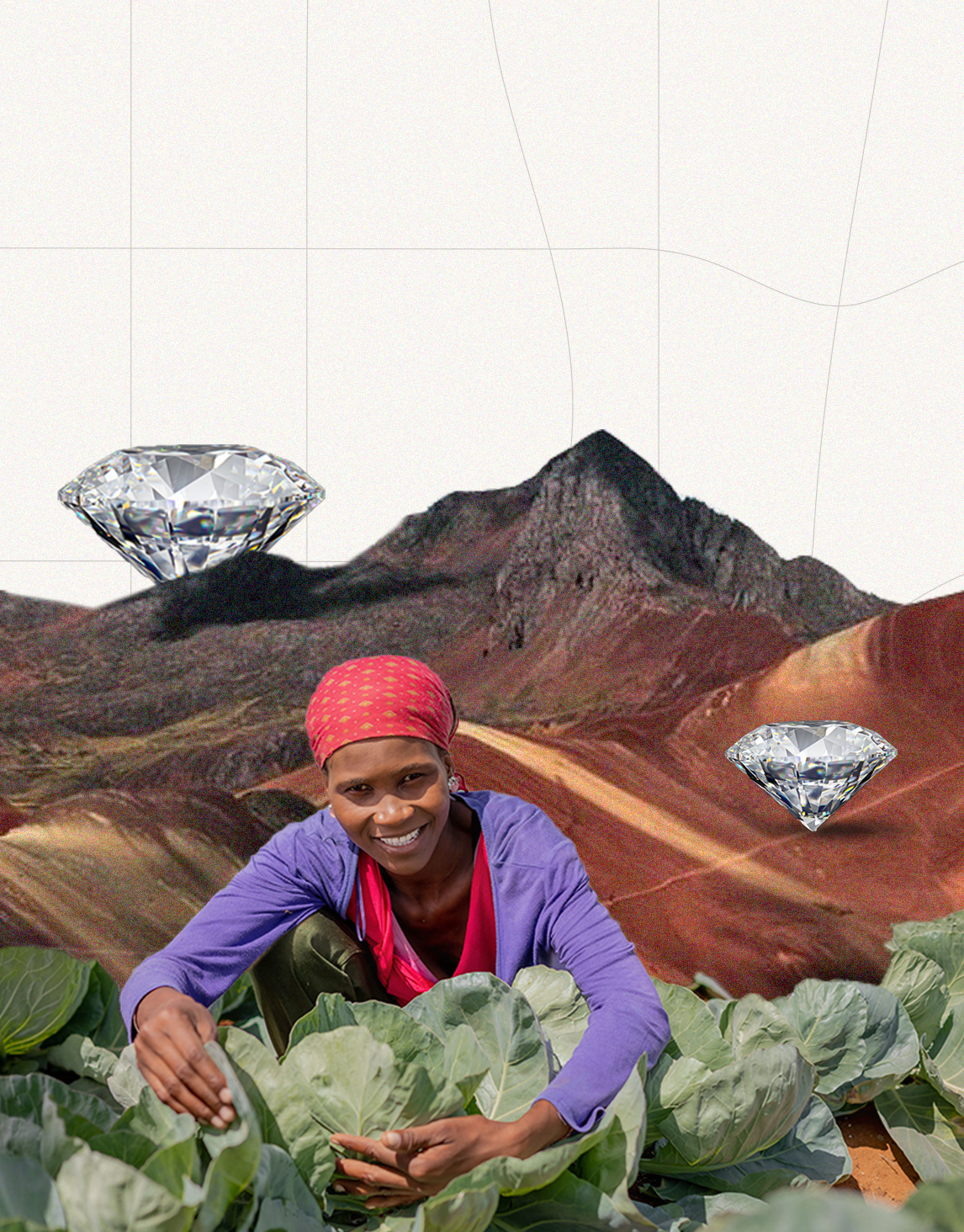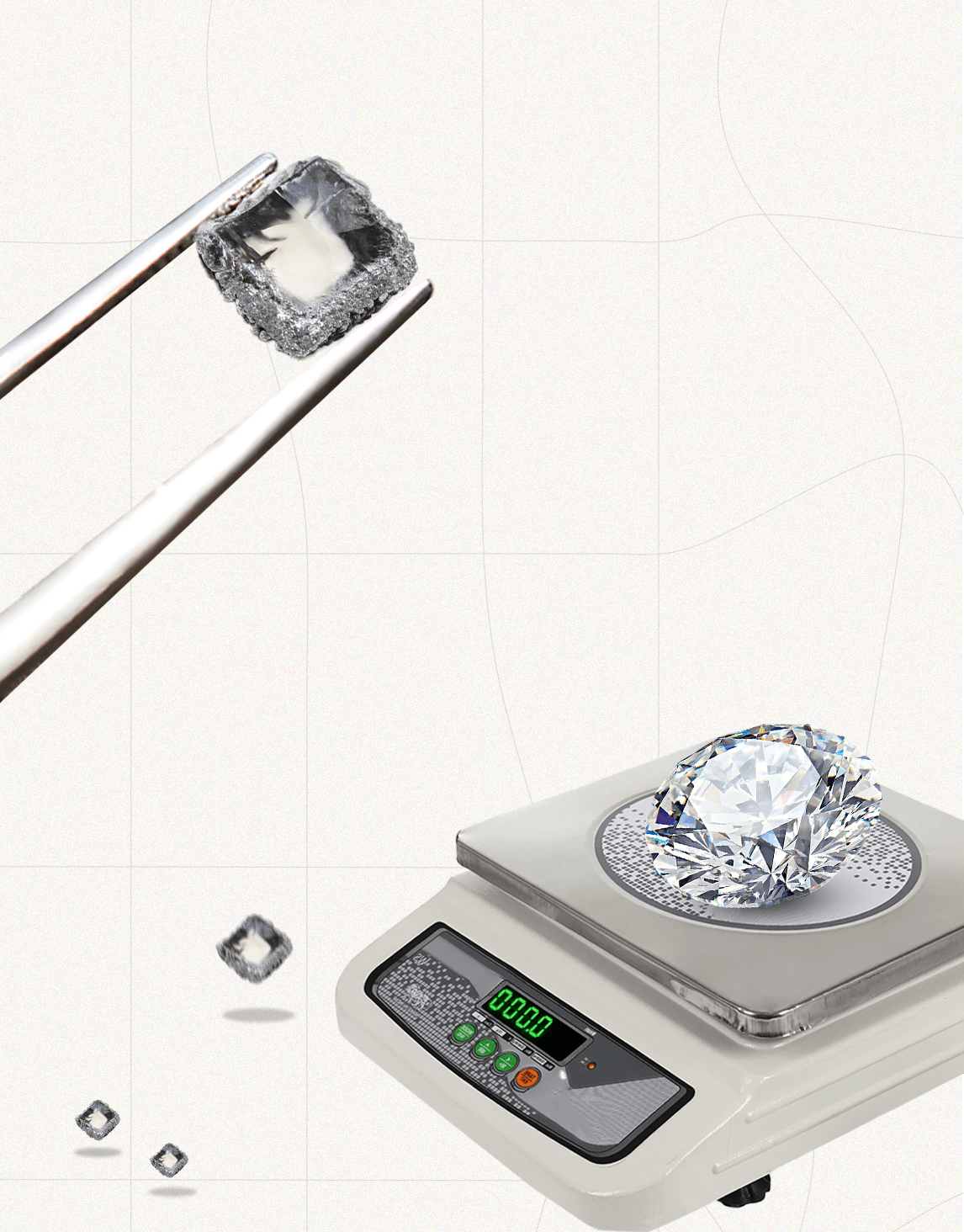With Love From Mother Earth: Natural Diamonds
Magical, mystical and rare – know why natural diamonds are a perfect investment for you and Earth.

‘Every diamond can shine when there is someone to recognize its good facets and inhibit its flaws’- Wes Fesler
Natural diamonds hold within them a magic and history unlike any stone on Earth. Rare, timeless and exciting – these jewels have captured hearts and eyes for centuries. But what makes them so special? And how do you know which jewel is perfect for you with so many seemingly identical artificial diamonds available today?
The jewels you buy reflect who you are to your core, which is why a natural diamond, more than any other diamond, is always one that will resonate with your heart.

What makes a natural diamond’s sparkle unique?
Most natural diamonds found in commercial diamond deposits are over 2 billion years old, formed within the Earth’s mantle and delivered to the surface by deep-source volcanic eruptions. These eruptions produce kimberlite and lamproite pipes that are sought after by diamond prospectors even today to look for new diamonds.
Because of an origin so unique, no two natural diamonds are alike; each, formed, created, and found through a journey all its own.
The difference between lab-grown diamonds (LGDs) and natural diamonds
Lab-grown diamonds or artificial diamonds are mass produced in laboratories. These diamonds use a synthesized process similar to one a natural diamond goes through, giving them virtually the same carbon structure. Through this process they are formed in days or weeks, different from a natural diamond’s long and unique journey of creation.
How does the industry ensure that natural diamonds are sourced responsibly?
The diamond industry uses the Kimberley Process, also known as the Kimberley Process Certification Scheme (KPCS). This is a joint initiative between governments, diamond industry bodies and civil society mandated by the UN and the WTO to stop the flow of ‘Conflict Diamonds’. Today, 82 countries participate in the Kimberley Process, and more than 99.8% of all the world’s natural diamonds stand certified conflict-free.
Giving back to the environment
The natural diamond industry has undertaken several extraordinary steps towards sustainability and creating a positive environmental impact, from giving a protected home to thousands of species of wildlife in reclaimed mining land, to helping communities thrive all over the world.
To optimize the use of energy and water in its operations the industry has ensured that 84% of the water used in its operations is recycled. 99.99% of the waste produced is rock, which is then reclaimed during the mine closure processes. The industry also has a series of programs aimed at reducing energy consumption, CO2 emissions, and using renewable energy sources like wind farms, hydropower, biogas and solar.
As per ERM report 2021, the carbon footprint of a 1ct natural diamond is estimated to be less than a return flight from Los Angeles to Las Vegas.

Vocal for Local
The natural diamond industry has profoundly impacted the lives of millions of people. Globally the industry employs around 10 million people and 80 percent of the value created by diamond recovery is retained by the communities in which the stones were mined. That translates into $6.8 billion annually going directly to local communities. The industry also employs over 2 million people in India and directly contributes to 7% of India’s GDP.

Lab-grown diamonds: cheaper than natural diamonds, but is cheaper always better?
With lab-grown diamonds, there is no cap on the supply, and technological advancements have only led to a fall in the cost of production.
Natural diamonds in contrast are finite and truly rare, making them more valuable and expensive. The Bain and Co 2021 report suggests that over the last 30 years, natural diamonds have been shown to appreciate in value by approximately 3%-4% on average every year. The cost of lab-grown diamonds on the other hand continues to decline.
Paul Zimnisky’s October 2022 report quotes, LGD prices have dropped significantly over the last few years with prices down from 80% of the natural price in 2016 to 35% by 2020.
Why should you invest in only natural diamonds?
Natural diamonds possess a quality no other gemstones do, they’re truly precious. These jewels of Earth are limited, and the volcanic activity that created them, will not create any more. The love we have for them, and the sparkle they hold, will only get rarer with time – so it is with the love we give each natural diamond made by Earth, that we carry its legacy.
With each natural diamond we invest in, buy, pass on, and love – we carry forward a sparkle that is as rare and timeless as the Earth itself.
